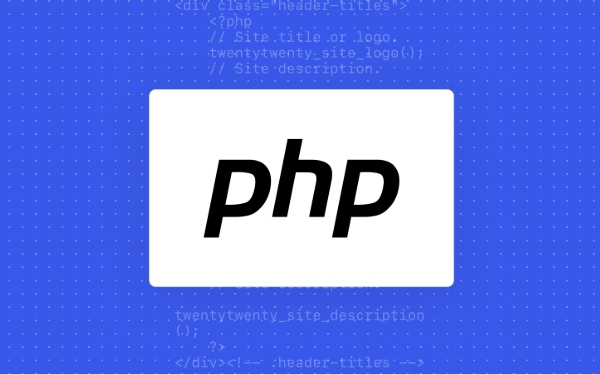PHP中的资源管理:'资源”类型的生命周期
PHP资源的生命周期分为三个阶段:1. 资源创建,通过fopen、curl_init等函数获取外部系统句柄;2. 资源使用,将资源传递给相关函数进行操作,PHP通过资源ID映射到底层系统结构;3. 资源销毁,应优先手动调用fclose、curl_close等函数释放资源,避免依赖自动垃圾回收,以防文件描述符耗尽。最佳实践包括:始终显式关闭资源、使用try...finally确保清理、优先选用支持__destruct的PDO等对象封装、避免全局存储资源,并可通过get_resources()监控活动资源以排查泄漏。总之,应做到获取晚、释放早、始终清理。

In PHP, the resource type is a special variable that holds a reference to an external resource—typically something outside the PHP runtime, like a file handle, database connection, or image canvas. Understanding how resources are created, used, and cleaned up is key to writing efficient and leak-free PHP code.

Unlike standard data types (integers, strings, arrays), resources represent stateful connections or handles to system-level entities. Because of this, their lifecycle is tightly tied to external systems and proper cleanup is critical.
Here’s how the lifecycle of a PHP resource typically works:

1. Resource Creation: Acquiring External Handles
Resources are created when PHP functions request a system-level resource from the operating system or an extension.
Common examples include:

$handle = fopen('data.txt', 'r'); // File handle
$connection = curl_init(); // cURL session
$imagick = imagick_new_image(); // Image resource (via Imagick)
$pdo = mysqli_connect('localhost', ...); // MySQL connectionAt this point, PHP allocates a resource ID internally and associates it with the underlying system resource. The variable $handle doesn't contain the file data—it's a pointer to an open file descriptor managed by the OS.
⚠️ Not all extensions use resources the same way. Modern extensions like
PDOormysqli(in object mode) use objects instead of raw resources for better encapsulation.
2. Resource Usage: Interacting with the Handle
Once created, you pass the resource to other functions that operate on it:
while (!feof($handle)) {
$line = fgets($handle);
echo $line;
}These functions use the resource ID to look up the actual system handle and perform operations (e.g., reading bytes from a file). The resource remains active as long as it’s referenced by a variable and hasn’t been explicitly closed.
Internally, PHP maintains a lookup table mapping resource IDs to actual C-level structures (like FILE* pointers in C).
3. Resource Destruction: Freeing the Handle
Resources should be explicitly freed when no longer needed to avoid leaks.
Manual Cleanup
Use the appropriate close/free function:
fclose($handle); // Close file curl_close($connection); // Terminate cURL session
After calling fclose(), the resource becomes invalid. Using it afterward triggers a warning:
echo fgets($handle); // Warning: supplied resource is not a valid stream
Automatic Cleanup (Garbage Collection)
If you don’t close a resource manually, PHP will attempt to clean it up when the variable goes out of scope or at the end of the request:
function readFirstLine() {
$f = fopen('data.txt', 'r');
$line = fgets($f);
return $line;
} // $f goes out of scope → PHP closes the file handle automaticallyHowever, relying on garbage collection is risky, especially in long-running scripts or loops:
for ($i = 0; $i < 1000; $i ) {
$h = fopen("file_$i.txt", 'r');
// Process file...
// No fclose() → you may hit "Too many open files" error
}Even though PHP cleans up at script end, the OS has limits on concurrent open file descriptors. You can exhaust them during execution.
4. Best Practices for Managing Resources
To avoid leaks and ensure robust code:
✅ Always close resources explicitly after use:
$handle = fopen('data.txt', 'r'); // ... use it fclose($handle);✅ Use
try ... finallypatterns (ortry ... catchwith cleanup) in critical sections:$handle = fopen('data.txt', 'r'); if ($handle) { try { // Process file } finally { fclose($handle); // Guaranteed cleanup } }✅ Prefer objects over raw resources where possible (e.g.,
PDO,mysqli,GuzzleHttp\Client). They support destructors (__destruct()) for more predictable cleanup.✅ Monitor resource usage in long-running scripts:
echo gc_collect_cycles(); // Force GC var_dump(get_resources()); // List all active resources
❌ Avoid storing resources in global/static variables unless absolutely necessary—they’re harder to track and clean.
Bonus: Inspecting Resources
You can check a variable’s resource type and ID:
$handle = fopen('data.txt', 'r');
var_dump($handle); // resource(5) of type (stream)
get_resource_type($handle); // Returns "stream"
is_resource($handle); // Returns trueget_resources() (PHP 7.0 ) returns all currently active resources:
foreach (get_resources() as $res) {
echo get_resource_type($res) . "\n"; // e.g., "curl", "mysql link"
}Useful for debugging leaks.
Basically, just remember: acquire late, release early, and always clean up. Resources are bridges to the outside world—don’t leave them open.
以上是PHP中的资源管理:'资源”类型的生命周期的详细内容。更多信息请关注PHP中文网其他相关文章!

热AI工具

Undress AI Tool
免费脱衣服图片

Undresser.AI Undress
人工智能驱动的应用程序,用于创建逼真的裸体照片

AI Clothes Remover
用于从照片中去除衣服的在线人工智能工具。

Stock Market GPT
人工智能驱动投资研究,做出更明智的决策

热门文章

热工具

记事本++7.3.1
好用且免费的代码编辑器

SublimeText3汉化版
中文版,非常好用

禅工作室 13.0.1
功能强大的PHP集成开发环境

Dreamweaver CS6
视觉化网页开发工具

SublimeText3 Mac版
神级代码编辑软件(SublimeText3)
 使用PHP 8的工会类型对您的代码库进行现代化现代化
Jul 27, 2025 am 04:33 AM
使用PHP 8的工会类型对您的代码库进行现代化现代化
Jul 27, 2025 am 04:33 AM
UpgradePHP7.xcodebasestoPHP8 byreplacingPHPDoc-suggestedtypeslike@paramstring|intwithnativeuniontypessuchasstring|intforparametersandreturntypes,whichimprovestypesafetyandclarity;2.Applyuniontypestomixedinputparameters(e.g.,int|stringforIDs),nullable
 PHP 8.1枚举:一种新型类型安全常数的范式
Jul 28, 2025 am 04:43 AM
PHP 8.1枚举:一种新型类型安全常数的范式
Jul 28, 2025 am 04:43 AM
PHP8.1引入的Enums提供了类型安全的常量集合,解决了魔法值问题;1.使用enum定义固定常量,如Status::Draft,确保只有预定义值可用;2.通过BackedEnums将枚举绑定到字符串或整数,支持from()和tryFrom()在标量与枚举间转换;3.枚举可定义方法和行为,如color()和isEditable(),增强业务逻辑封装;4.适用于状态、配置等静态场景,不适用于动态数据;5.可实现UnitEnum或BackedEnum接口进行类型约束,提升代码健壮性和IDE支持,是
 精度的危险:处理PHP中的浮点数
Jul 26, 2025 am 09:41 AM
精度的危险:处理PHP中的浮点数
Jul 26, 2025 am 09:41 AM
0.1 0.2!==0.3inPHPduetobinaryfloating-pointprecisionlimitations,sodevelopersmustavoiddirectcomparisonsanduseepsilon-basedchecks,employBCMathorGMPforexactarithmetic,storecurrencyinintegerswhenpossible,formatoutputcarefully,andneverrelyonfloatprecision
 从'混合到`void':php返回类型声明的实用指南
Jul 27, 2025 am 12:11 AM
从'混合到`void':php返回类型声明的实用指南
Jul 27, 2025 am 12:11 AM
returnTypesinphpimProveCoderEliabilitialaryandClarityBysPecifying whatafunctionMustReturn.2.UseBasictyPesLikestring,array,ordatimetoetoEnforCorrectRecturcrectRecturnValuesUnturnvAluesAndCatchErrorSearly.3.applynullabletypespeswith?applynullabletypeswith?
 变量的寿命:PHP的内部' Zval”结构解释了
Jul 27, 2025 am 03:47 AM
变量的寿命:PHP的内部' Zval”结构解释了
Jul 27, 2025 am 03:47 AM
PHP使用zval结构管理变量,答案是:1.zval包含值、类型和元数据,大小为16字节;2.类型变化时只需更新联合体和类型信息;3.复杂类型通过指针引用带引用计数的结构;4.赋值时采用写时复制优化内存;5.引用使变量共享同一zval;6.循环引用由专门的垃圾回收器处理。这解释了PHP变量行为的底层机制。
 PHP中的资源管理:'资源”类型的生命周期
Jul 27, 2025 am 04:30 AM
PHP中的资源管理:'资源”类型的生命周期
Jul 27, 2025 am 04:30 AM
PHP资源的生命周期分为三个阶段:1.资源创建,通过fopen、curl_init等函数获取外部系统句柄;2.资源使用,将资源传递给相关函数进行操作,PHP通过资源ID映射到底层系统结构;3.资源销毁,应优先手动调用fclose、curl_close等函数释放资源,避免依赖自动垃圾回收,以防文件描述符耗尽。最佳实践包括:始终显式关闭资源、使用try...finally确保清理、优先选用支持__destruct的PDO等对象封装、避免全局存储资源,并可通过get_resources()监控活动资源
 PHP的二元性:导航松散键入与严格类型声明
Jul 26, 2025 am 09:42 AM
PHP的二元性:导航松散键入与严格类型声明
Jul 26, 2025 am 09:42 AM
PHP支持松散类型和严格类型并存,这是其从脚本语言演进为现代编程语言的核心特征。1.松散类型适合快速原型开发、处理动态用户输入或对接外部API,但存在类型隐式转换风险、调试困难和工具支持弱的问题。2.严格类型通过declare(strict_types=1)启用,可提前发现错误、提升代码可读性和IDE支持,适用于核心业务逻辑、团队协作和对数据完整性要求高的场景。3.实际开发中应混合使用:默认启用严格类型,仅在必要时在输入边界使用松散类型,并尽早进行验证和类型转换。4.推荐实践包括使用PHPSta
 ``?''的力量:有效利用PHP中的无效类型
Aug 08, 2025 am 01:50 AM
``?''的力量:有效利用PHP中的无效类型
Aug 08, 2025 am 01:50 AM
?在PHP中表示类型可为空,能提升代码的类型安全性和可读性;1.用于可选参数时确保传入值为指定类型或null;2.用于可能查找不到结果的返回值,明确告知调用者可能返回null;3.用于API等存在可选数据的场景,准确建模数据结构;使用时应仅在null有意义时使用,避免与默认null重复定义,结合??和?->操作符处理null值,并注意不可用于void类型,PHP8后?string与string|null等价但前者更简洁,合理使用可显着减少运行时错误。








